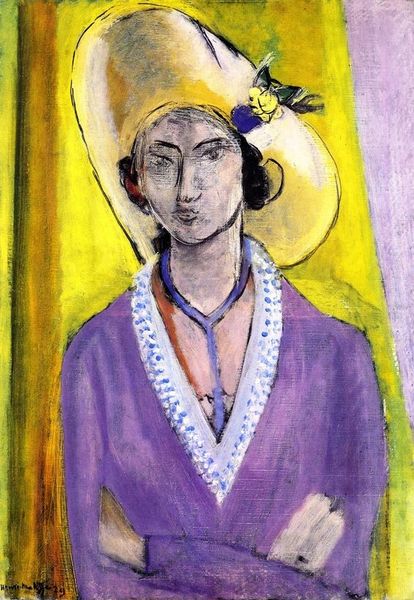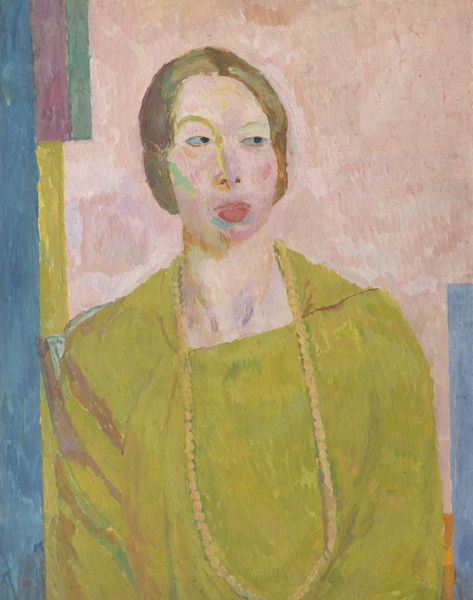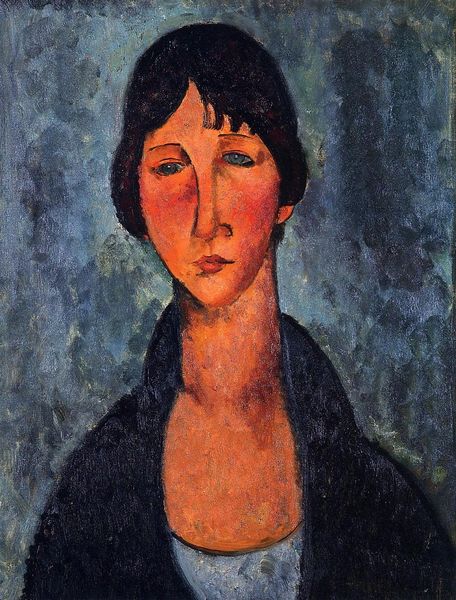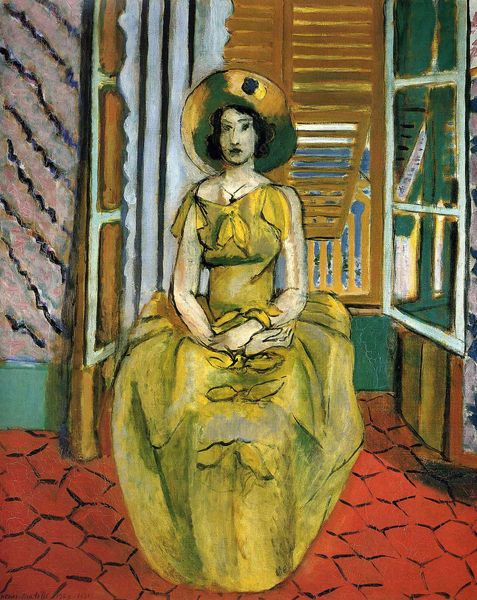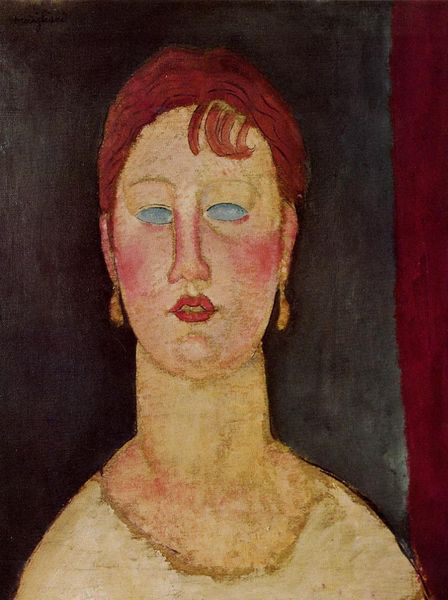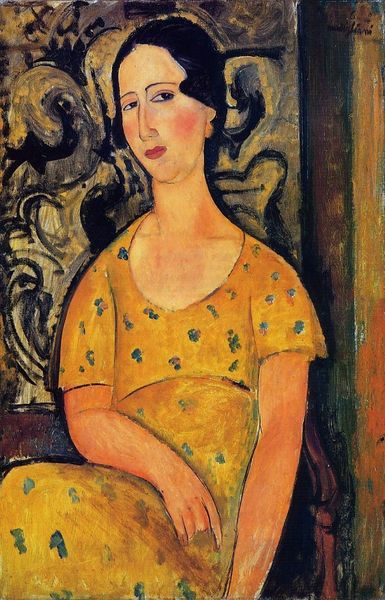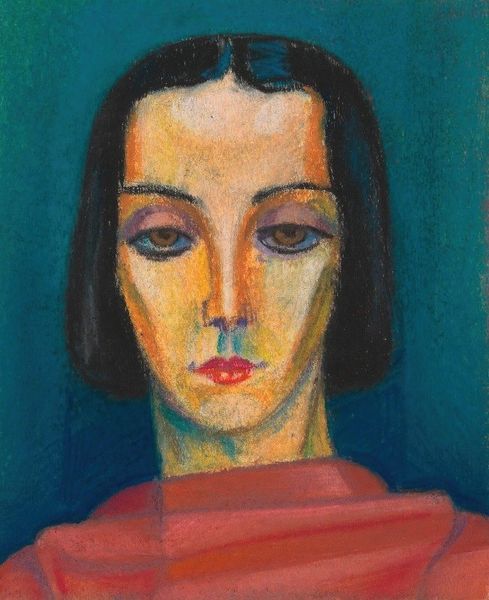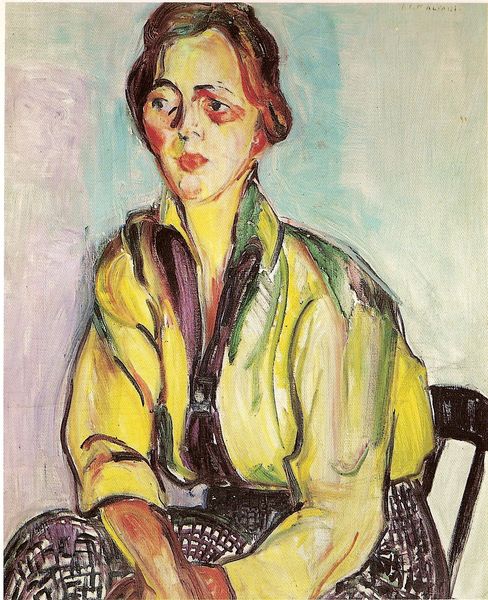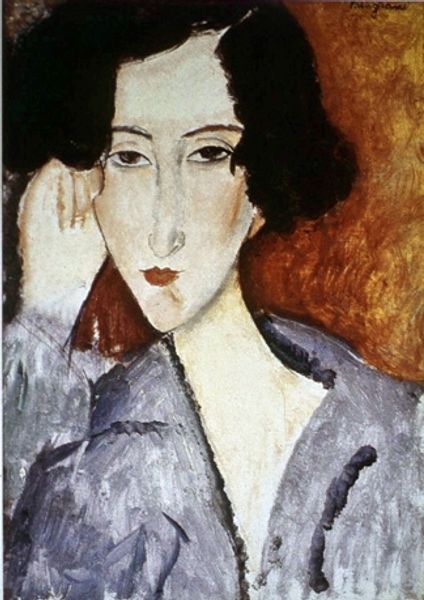
Dimensions: 40.8 x 32.7 cm
Copyright: Public domain US
Editor: This is "Woman with Oriental Dress," an oil painting created by Henri Matisse in 1919. The subject's gaze is so direct; there’s a certain flatness to the planes that both intrigues and slightly unnerves me. How do you read this painting? Curator: Primarily through its formal relationships. Notice how Matisse deploys complementary colors—the greens and yellows juxtaposed against the warm skin tones—creating a vibrant tension. He explores the inherent qualities of oil paint and uses its capacity for expressive brushwork to describe form. Editor: I see that contrast in color now that you mention it. But how do we consider her "oriental dress"? It seems integrated into the overall composition, not necessarily a focal point. Curator: Indeed. It functions less as representation and more as compositional element. See how the pattern echoes and disrupts the background, creating spatial ambiguity. Are we truly seeing the subject within a defined space, or are we presented with an orchestrated arrangement of form and color that challenges representational conventions? Editor: That's interesting; it reframes my view of the portrait. So, it’s less about the subject herself and more about how Matisse manipulates the visual elements to convey a feeling or idea? Curator: Precisely. The emphasis shifts from mimetic representation to the intrinsic properties of the medium itself. It is through this formal analysis we begin to unpack the painting's inherent structural logic and appreciate Matisse’s manipulation of colour, line, and form. Editor: This way of approaching the art through its structures helps to see how much a painting can "mean," beyond what's visible in the portrayed person, time or place. Thank you. Curator: You are most welcome. Always remember, meaning often lies not *in* the subject, but *within* the framework of artistic choices.
Comments
No comments
Be the first to comment and join the conversation on the ultimate creative platform.
